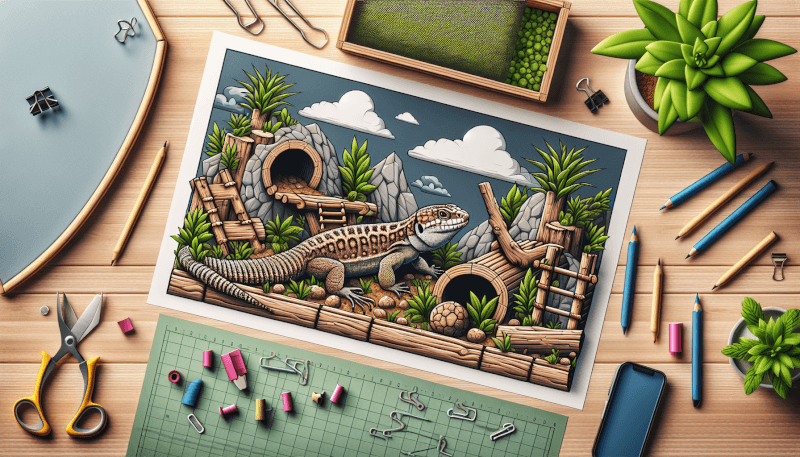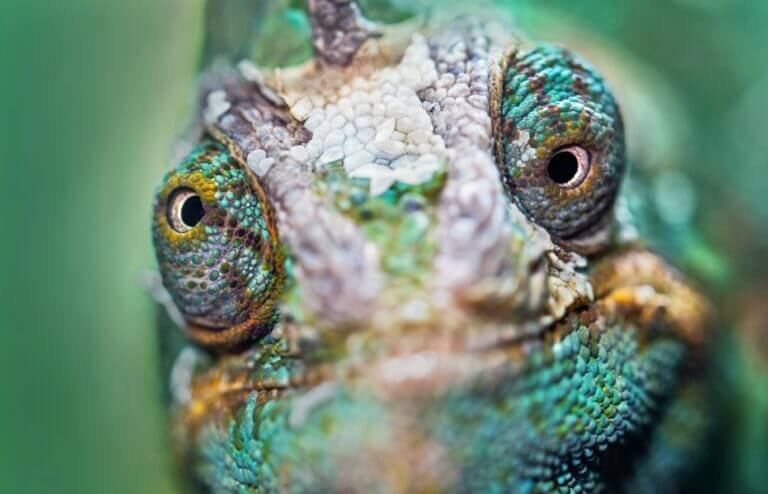If you’re a reptile enthusiast looking to create a captivating and stimulating space for your beloved lizard, you may be wondering, “How can I make my lizard’s habitat more engaging?” Creating an enriching environment for your scaly friend not only helps to keep them mentally stimulated, but it also enhances their overall well-being. In this article, we will explore various tips and tricks on how to transform your lizard’s enclosure into a haven of excitement, allowing them to thrive in their habitat like never before. So, get ready to elevate your lizard’s living quarters and witness their curiosity and enjoyment soar to new heights!
Choosing the Right Enclosure
When it comes to creating the perfect habitat for your lizard, choosing the right enclosure is crucial. The size of the enclosure is the first factor to consider. You want to ensure that your reptile has enough space to move around comfortably. The size of the enclosure will depend on the species and size of your lizard. Some lizards require larger enclosures, while others may be perfectly content in a smaller space.
Ready for Cat Trivia?
Test your knowledge about cats!

Next, you’ll need to decide on the type of enclosure that suits your lizard’s needs. There are several options to choose from, including glass terrariums, wooden enclosures, and custom-built cages. Glass terrariums are popular choices for their visibility and ease of maintenance. Wooden enclosures offer a more natural look but may require more maintenance. Custom-built cages give you the flexibility to design the perfect habitat for your lizard, but they can be more expensive.
Lastly, consider the material of the enclosure. Glass enclosures provide excellent visibility and are easy to clean, but they may not retain heat as well as other materials. Wooden enclosures can provide better insulation and natural aesthetics, but they may require more maintenance. Deciding on the material will depend on your lizard’s specific needs and your preferred aesthetics.
Creating a Naturalistic Environment
Creating a naturalistic environment is important for your lizard’s overall well-being. Adding plants and foliage is a great way to replicate your lizard’s natural habitat. Choose non-toxic plants that can thrive in the enclosure’s environment. This will not only provide a more visually appealing habitat for your lizard but also offer hiding spots and climbing opportunities.
Incorporating branches and logs into the enclosure can provide additional climbing and perching areas for your reptile. Make sure the branches and logs are securely positioned to prevent any accidents or injuries. These natural elements will help create a more stimulating and engaging environment for your lizard.
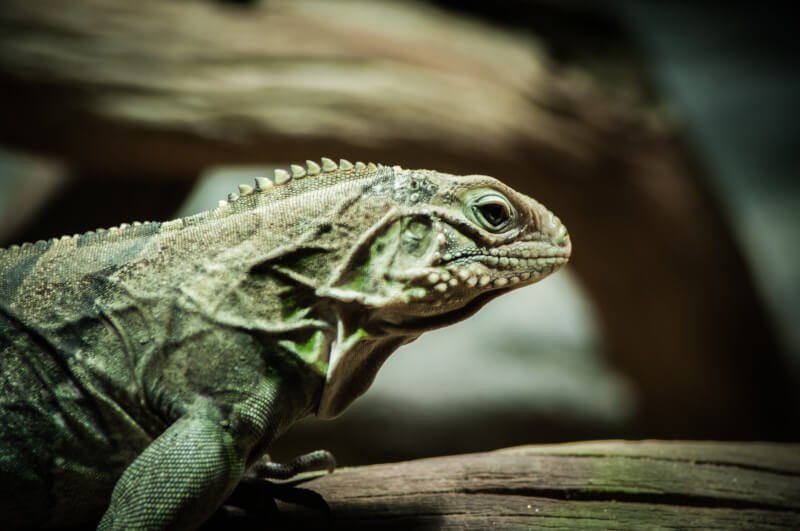
Temperature and Lighting Control
Maintaining optimal temperature and providing proper lighting are crucial for the health of your lizard. Different species of lizards have different temperature requirements, so it’s essential to research the specific needs of your reptile. Use heat lamps, ceramic heat emitters, or heating pads to create a temperature gradient in the enclosure. This will allow your lizard to regulate its body temperature effectively.
UVB lighting is essential for lizards as it aids in the synthesis of vitamin D3, which is crucial for calcium absorption. Install a UVB light fixture and ensure that it covers the necessary area in the enclosure. Additionally, create a day-night cycle by using timers for the lighting fixtures. This will mimic the natural light patterns and help regulate your lizard’s internal clock.
Setting Up a Water Source
Having an appropriate water source is essential for your lizard’s hydration needs. Use a suitable water dish that is large enough for your lizard to comfortably drink from. Make sure to keep the water dish clean and provide fresh water daily. Some lizards might enjoy soaking in shallow water, so you can also provide a larger water dish for this purpose.
In addition to a water dish, consider creating a humidity source in the enclosure. This can be achieved by misting the enclosure with water or using a reptile humidifier. Maintaining proper humidity levels is vital for lizards that require high humidity, such as tropical species.
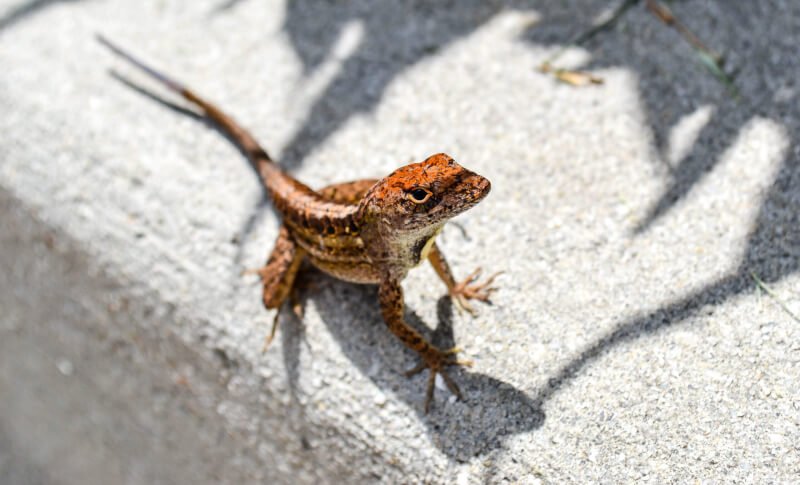
Providing a Proper Substrate
Choosing the right substrate material is important for your lizard’s comfort and cleanliness. Avoid substrates that can cause harm or discomfort, such as sand or loose particles that can be ingested. Opt for substrates like reptile carpet, paper towels, or non-toxic wood shavings. These substrates are easy to clean and provide a safe and comfortable surface for your lizard.
Consider the depth of the substrate as well. Some lizards might enjoy burrowing, so providing a deeper layer of substrate can add an additional element of enrichment to their habitat. Research your lizard’s natural behavior to determine the appropriate substrate depth for their needs.
Adding Enrichment Accessories
To keep your lizard mentally stimulated and active, it’s important to add enrichment accessories to their habitat. Climbing structures, such as rocks, branches, or artificial vines, can provide opportunities for exercise and exploration. Make sure the climbing structures are sturdy and securely positioned to prevent any accidents.
Incorporating a basking area is essential for lizards that require a specific temperature gradient. This can be achieved by providing a heat lamp or a designated basking platform. The basking area should be positioned at a height and temperature that suits your lizard’s needs.
Including hide boxes in the enclosure will provide your lizard with a sense of security. This can be achieved by using artificial caves, logs, or even repurposed household items. Place the hide boxes in strategic locations throughout the enclosure to give your lizard options for finding a comfortable hiding spot.
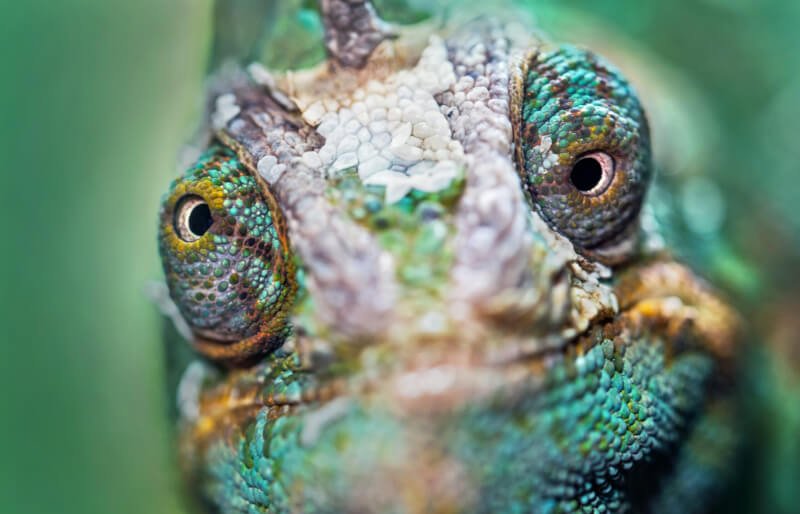
Feeding and Nutrition
Offering a variety of food is important to ensure your lizard receives a well-rounded diet. Each species of lizard may have specific dietary requirements, so it’s important to research their nutritional needs. Provide a mix of insects, fruits, vegetables, and commercially available reptile food to meet their dietary needs.
Including natural food sources can provide additional enrichment and mimic the lizard’s natural hunting behaviors. For example, you can offer live insects or small feeder fish for lizards that eat prey in the wild. Just make sure that any live food is safe and appropriate for your lizard’s species.
Using food enrichment techniques can further engage your lizard during feeding time. For example, you can place food in puzzle feeders or hide it within the enclosure to encourage foraging behavior. This will help keep your lizard mentally stimulated and prevent boredom.
Maintaining a Regular Cleaning Schedule
Keeping the enclosure clean is crucial for your lizard’s health and well-being. Regularly clean the enclosure by removing any feces, uneaten food, and soiled substrate. Wipe down the surfaces with a reptile-safe disinfectant to prevent the growth of bacteria or parasites.
Sanitize any accessories, such as hide boxes or climbing structures, regularly to prevent the buildup of bacteria or mold. Follow the manufacturer’s instructions for each accessory to ensure proper cleaning and maintenance.
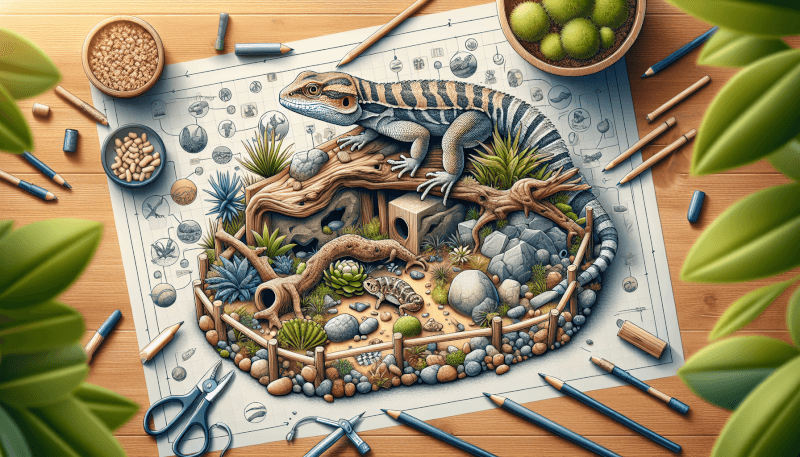
Monitoring and Adjusting Environmental Conditions
Regularly monitor the temperature and humidity levels in your lizard’s enclosure. Use a thermometer and hygrometer to accurately measure these parameters. Adjust the temperature and humidity levels as needed to ensure they remain within the appropriate range for your lizard’s species.
Making necessary adjustments might involve changing the position or wattage of heat lamps, adjusting the misting schedule, or adding or removing humidity sources. It’s important to regularly check these environmental conditions to ensure your lizard’s comfort and health.
Creating a Daily Interaction Routine
In addition to providing a stimulating habitat, daily interaction is important for your lizard’s socialization and overall well-being. Handling and socializing with your lizard can help build trust and create a bond between you and your pet. However, make sure to approach your lizard calmly and allow them to initiate interaction if they are not comfortable being handled.
Engaging with toys and games can provide mental and physical stimulation for your lizard. You can introduce toys such as puzzle feeders, bouncy balls, or lizard-safe mirrors. It’s important to supervise your lizard during playtime to ensure their safety and prevent any accidents.
Remember, each lizard is unique, and it’s important to observe your pet’s behavior and preferences to tailor their habitat and interaction routine accordingly. With a well-designed and engaging habitat, combined with regular interaction, your lizard will thrive and lead a happy and fulfilled life.
